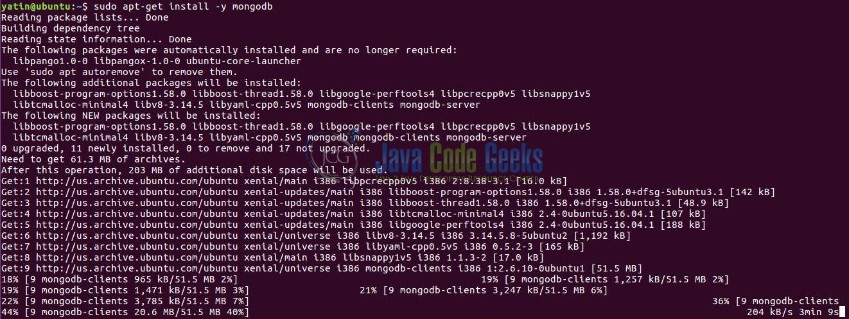Install Mongodb
With Ubuntu 18.04 LTS released, I have installed it on my VMware lab machine for testing purposes… the steps below is how I got MongoDB installed on Ubuntu 18.04 LTS servers… if you want to install it, the steps below should be a great place to start…
Download The Project That Started It all for Kendrick Lamar, Section.80 Kendrick Lamar, one of the new artists repping the West Coast. Section.80 is his much talked about mixtape, originally released in 2011. It is now known as his official debut album, an independent release. Kendrick lamar section.80 download. Listen to Brasstracks’ Kendrick Lamar Tribute “Good Kid, Brass City” on Audiomack GRAMMY-winning duo Brasstracks deliver an unexpected Kendrick Lamar essential with their eight-minute epic, “Good Kid, Brass City.”You already know Brasstracks. 17 rows Section.80 introduced much of the world to Kendrick Lamar, an introverted Compton native.
I am trying to test out mongoDB and see if it is anything for me. I downloaded the 32bit windows version, but have no idea on how to continue from now on. I normally use the WAMP services for deve. Use this tutorial to install MongoDB Community Edition on Red Hat Enterprise Linux or CentOS Linux versions 6 and 7 using.rpm packages. MongoDB Atlas —Install MongoDB Compass— 5 of X. Importing a CSV into MongoDB Atlas I’m actually getting ahead of myself. I guess things are about to get a little more technical. Install MongoDB with Security on Windows Server 2016 MongoDB on Windows Server 2016 with Security MongoDB on Windows Server 2016 is a free and open-source cross-platform document-oriented database program.
- MongoDB is a free and open-source NoSQL document database used commonly in modern web applications. This tutorial will help you set up MongoDB on your server for a production application environment. To follow this tutorial, you will need: One Ubuntu 16.04 server set up by following this initial.
- MongoDB Atlas Global Cloud Database. Deploy, operate, and scale a MongoDB database in the cloud with just a few clicks. Fully elastic and highly available by default, MongoDB Atlas is the easiest way to try out the latest version of the database, MongoDB 4.0. Secure from the start.
MongoDB, a free open source, NoSQL High-performance, schema-free document-oriented database can be used to create powerful websites and applications… This brief tutorial is going to show students and new users how to install MongoDB on Ubuntu 18.04 LTS servers.
MongoDB is already in Ubuntu default repositories… however, the version in Ubuntu repositories isn’t the latest and greatest… In order to install the latest, you must install MongoDB package repository on Ubuntu, and this tutorial will show you how.
When you’re ready to get MongoDB installed, follow the steps below:
Step 1: Add MongoDB Package repository to Ubuntu
In order to get the latest version of MongoDB, you must add its repository to Ubuntu. to do that, run the commands below to add the official repository key.
sudo apt-key adv --keyserver hkp://keyserver.ubuntu.com:80 --recv 2930ADAE8CAF5059EE73BB4B58712A2291FA4AD5
After adding the repository key to Ubuntu, run the commands below to add MongoDB repository to your system…
echo 'deb [ arch=amd64,arm64 ] https://repo.mongodb.org/apt/ubuntu xenial/mongodb-org/3.6 multiverse' sudo tee /etc/apt/sources.list.d/mongodb-org-3.6.list
Step 2: Install MongoDB on Ubuntu 18.04
Now that the repository and key have been added to Ubuntu, run the commands below to install the package.
Step 3: Manage MongoDB
After installing MongoDB, the commands below can be used to stop, start and enable MongoDB to automatically startup when the systems boots up.
By default, MongoDB listens on port 27017. after installing, the local server should be able to communicate with MongoDB. to verify whether MongoDB is running and active, run the commands below:
Halo combat evolved download full. sudo systemctl status mongod
You should see something like the lines below:
To connect to MongoDB shell, run the commands below:
mongo --host 127.0.0.1:27017

You should see something like the lines below:
Step 4: Adding Admin User
If you want to enable authentication, run the commands to create a new admin user after you’ve logged into MongoDB server.
> use admin
Then run the commands below to create a new admin user
> db.createUser({user:'admin', pwd:'new_password_here', roles:[{role:'root', db:'admin'}]})
You should see a successful admin user created

Exit and continue below to enable MongoDB logon authentication… Run the commands below to open MongoDB config file.
sudo nano /lib/systemd/system/mongod.service
Then change the highlighted line to look like the one below and save…
Save and exit
Restart MongDB to make the changes apply.
Now only authetication users will be allowed to access the database server…
mongo -u admin -p new_password_here --authenticationDatabase admin
Step 5: Completely Remove MongoDB
To completely remove MongoDB from a system, you must remove the MongoDB applications themselves, the configuration files, and any directories containing data and logs.
Stop the database server
sudo systemctl stop mongod.service
Remove all packages
sudo apt purge mongodb-org*
Finally, remove MongoDB databases and log files.
That’s it!
Install Mongodb On Ubuntu
You may also like the post below: